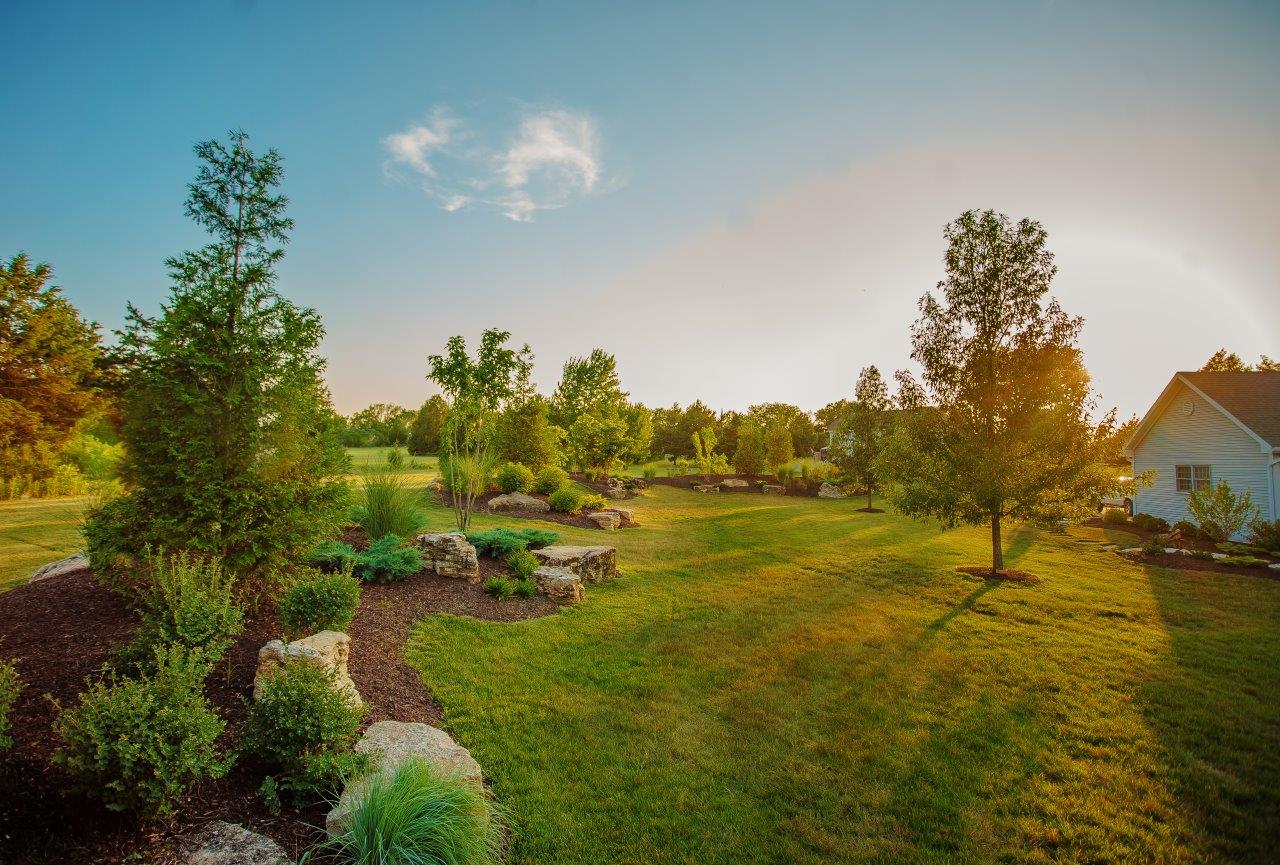Indicators on Hilton Head Landscapes You Should Know
Indicators on Hilton Head Landscapes You Should Know
Blog Article
6 Easy Facts About Hilton Head Landscapes Shown
Table of ContentsThe smart Trick of Hilton Head Landscapes That Nobody is Talking AboutThe smart Trick of Hilton Head Landscapes That Nobody is Talking AboutIndicators on Hilton Head Landscapes You Need To KnowSome Of Hilton Head LandscapesHilton Head Landscapes Can Be Fun For EveryoneThe 2-Minute Rule for Hilton Head LandscapesIndicators on Hilton Head Landscapes You Should Know
Line creates all forms and patterns and can be made use of in a range of methods in the landscape. Line in the landscape is created by the side between two products, the synopsis or shape of a type, or a lengthy straight feature. Lines are an effective tool for the developer since they can be used to create an unlimited variety of forms and forms, and they control motion of the eye and the body.

Lines can have several qualities, such as those described listed below, however they normally offer different objectives. Number 1. Lines in the landscape - landscaping hilton head sc. The residential or commercial properties of lines establish how individuals react to the landscape, both mentally and physically. Straight lines are architectural and forceful; they produce a formal personality, are typically related to an in proportion layout, and lead the eye straight to a focal point.
5 Simple Techniques For Hilton Head Landscapes
Straight lines are usually discovered in hardscape edges and product. Curved lines produce an informal, natural, relaxed personality that is associated a lot more with nature and unbalanced equilibrium. Rounded lines relocate the eye at a slower rate and include enigma to the room by creating hidden sights. Vertical lines move the eye up, making a room really feel bigger.
Upright lines in the landscape include tall, slim plant material, such as trees, or tall frameworks, such as an arbor or a bird home on a pole. Straight lines relocate the eye along the ground airplane and can make a space feel larger. Reduced lines are much more restrained and produce a sensation of remainder or repose.
The Ultimate Guide To Hilton Head Landscapes
Reduced lines are developed by reduced yard walls, pathways, and short bushes. Lines are utilized to draw forms on a strategy. In plan view, they specify plant beds and hardscape locations. Lines are likewise produced by the upright types of constructed features and plant material. There are 3 key line kinds that produce kind in the landscape: bedlines, hardscape lines, and plant lines.
Bedlines attach plant product to your house and hardscape due to the fact that the eye complies with the line, moving the look via the landscape. Hardscape lines are produced by the edge of the hardscape, which delineates the built structure. Line can likewise be developed by lengthy and slim products, such as a fencing or wall.
Some Known Details About Hilton Head Landscapes
Kind is located in both hardscape and plants, and it is normally the leading aesthetic element that spatially organizes the landscape and typically establishes the design of the yard. The form of structures, plant beds, and yard ornaments likewise figures out the total kind motif of the yard. Official, geometric kinds include circles, squares, and polygons.
Plants produce type in the yard via their describes or silhouettes, however type you can look here can likewise be specified by a space or adverse room between plants - Landscaping bluffton sc (https://www.openlearning.com/u/stevengonzales-sg0o4h/). Circles can be full circles, or they can be split right into half circles or circle sectors and incorporated with lines to create arcs and tangents
The Hilton Head Landscapes Statements
Circles can likewise be extended into ovals and ellipses for even more selection and passion. Circles are a solid layout kind since the eye is always drawn to the facility, which can be used to emphasize a prime focus or connect various other forms. Figure 2. Round types in hardscape and grass panels.
The square type can likewise be fractional and used repeatedly to develop a grid pattern. Unlike circles, squares are more powerful on the edges, which can be lined up or overlapped to produce unique patterns and more complex types.
Meandering lines commonly simulate the all-natural training course of rivers or streams and can be referred to as smooth lines with deeply curved undulations. Twisting lines (Number 3) work well for paths, plant bedlines, and completely dry stream beds. Twisting lines can include rate of interest and enigma to a yard by leading visitors around edges to discover brand-new sights and spaces.
Hilton Head Landscapes Fundamentals Explained

Number 5. Fragmented edges: tipping stones in path. Kind is one of the most long-lasting high quality of a plant (hilton head landscapers). https://qualtricsxm5z596vv95.qualtrics.com/jfe/form/SV_eEczR6xKXKuv6mi. Common plant kinds are well developed and standardized, as kind is one of the most constant and recognizable feature of plants. Kind can likewise be created via the massing of plants, where the overall mass develops a different form than an individual plant.
An extremely contrasting form must be made use of with careone or two job well as a focal point, yet way too many create disorder. Natural plant forms, rather than over-trimmed forms, need to develop the bulk of the composition. The importance of total type is essentially based on the seeing perspectivethe form of a tree can show up rather different to an individual standing under the canopy versus watching the tree from a distance in an open field.
The Main Principles Of Hilton Head Landscapes
Plant forms likewise develop and define deep space or open areas in between the plants, creating either convex or scooped types in the spaces. High-arching tree branches usually create a concave open room under the branches, and a round canopy with low branches loads the room to create a convex kind in the open area under the tree.
.jpeg)
Report this page